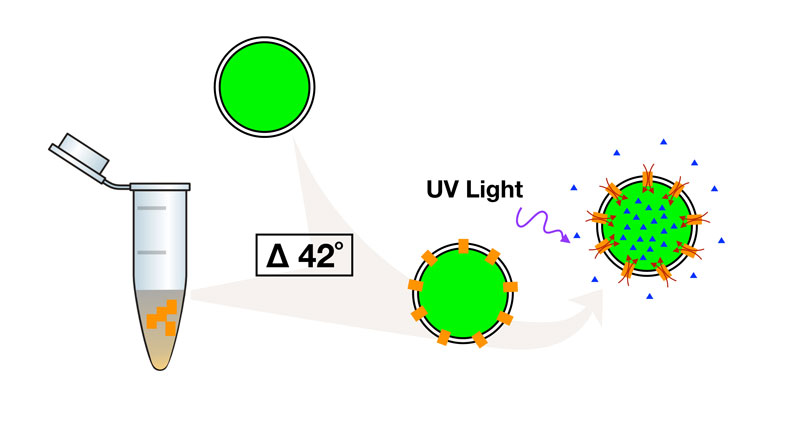
Building minimal artificial cellular systems with life like properties is a challenging and ambitious goal. Many of the cell’s behavior is dependent on membrane proteins embedded in the cell membrane. These membrane proteins may have a range of different functionalities including generating chemical gradients which are used as a source of energy for driving other membrane proteins. Therefore, a key step in producing minimal systems with lifelike behaviors is the inclusion of membrane proteins into lipid vesicles. Typically, this has been achieved with the use of detergents after lengthy protein purification steps which is a cumbersome process. Detergents are a class of molecules which can be used solubilize membrane proteins and lipids. Other alternatives to protein inclusion utilizes proteins which are expressed by cell free methods. However, these methodologies still require the use of detergents which can have negative effects on the expression yields.
Giorgio Fracasso, who is lead author on the paper, worked with other members of the lab of Dora Tang at MPI-CBG to develop a new methodology to reconstitute active membrane proteins (proteorhodopsin) into lipid vesicles after cell free expression without the use of detergents.
Dora Tang explains: “Our results provide a novel detergent-free method to introduce proteins, produced by cell free methods, into a lipid membrane. This method could lead to possibilities of simple routes to increasing molecular complexity, allowing for the simplification of building hierarchical systems.”
Fracasso, G., Körner, Y., Gonzales, D. T. T., & Dora Tang, T.-Y. (2019). In vitro gene expression and detergent-free reconstitution of active proteorhodopsin in lipid vesicles
. Experimental Biology and Medicine, 244(4), 314–322. doi.org/10.1177/1535370218820290